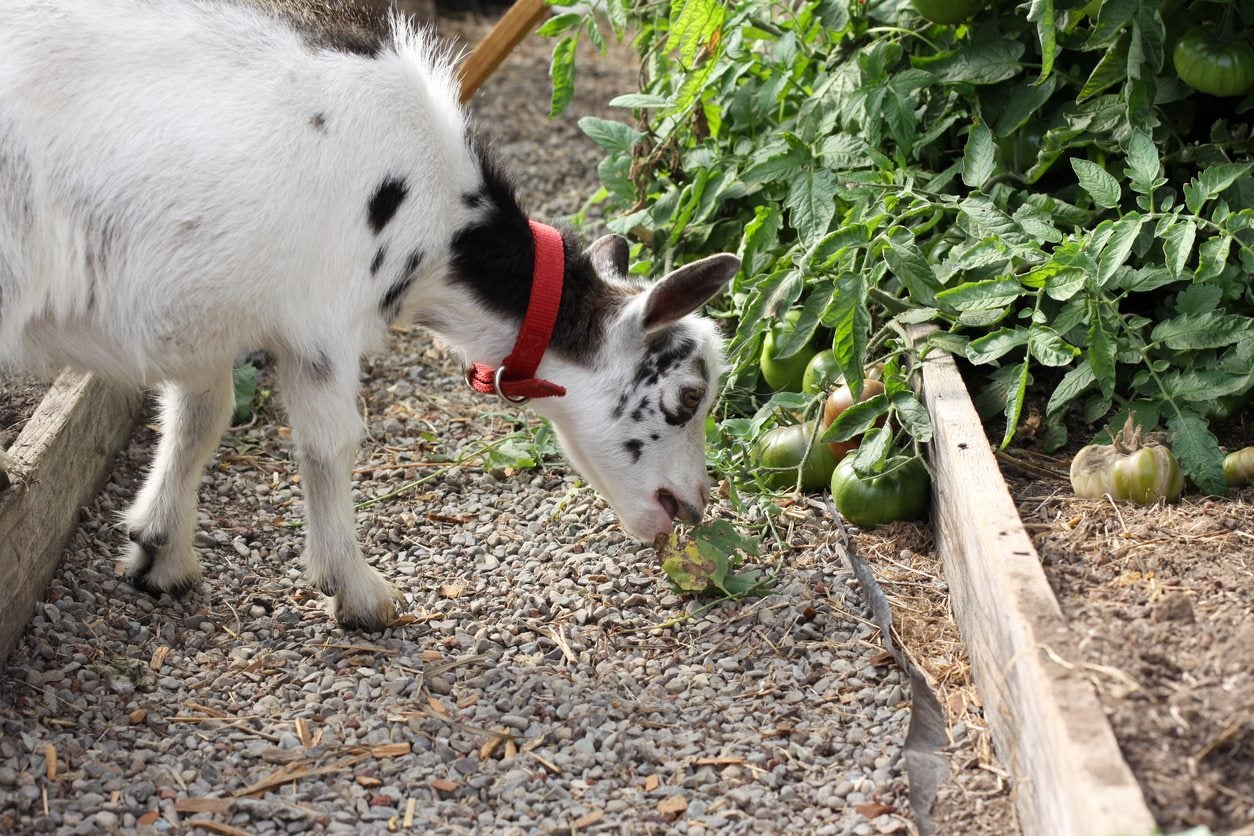Tomato Plant Protection: How To Protect Tomato Plants From Animals


While birds, hornworms, and other insects are common pests of tomato plants, animals can also be a problem sometimes too. Our gardens can be full of almost ripened fruits and vegetables one day, then eaten down to bare stalks the next day. Continue reading to learn about animals that target tomato plants and tomato plant protection.
Tomato Plant Protection
If your tomato plants are being eaten and you have ruled out birds or insects as the culprits, animals could be the problem. Most gardeners are used to battling rabbits, squirrels, or deer but don’t think much about protecting plants from these other animal pests:
We also don’t like to think that our own pets and livestock (like goats) could be the problem. Mole or vole damage to plants is oftentimes not detected until it is too late to save the plant. These animal pests eat the roots of the plant, not anything above the ground. In fact, you will most likely never see the mole or vole because if they do come above ground, it is usually only at night and even then, it is rare. So, if the foliage and fruits of your tomato plant are being eaten by something, it's very unlikely that it is moles or voles.
How to Protect Tomato Plants from Animals
Try raised beds for keeping animal pests from eating tomatoes and other garden plants. Raised beds that are 18 inches (46 cm.) high or higher are difficult for rabbits and other smaller animals to get into. It is also a good idea to have 6 inches (15 cm.) or more of the wood planks below the soil level so that small animals do not just burrow underneath the raised beds. You can also lay down a barrier of heavy-duty hardware cloth or wire mesh below raised beds to prevent animals from burrowing into your garden. If you have limited space, tomatoes grow very well in large pots, which will also make them too high for some animal pests. Another benefit to growing tomatoes in pots is that you can place these pots on balconies, patios, or other well-traveled areas where animals are not likely to go. Deer, raccoons, and rabbits generally avoid being too close to people or areas frequented by pets. You can also place your garden beds up near the house or in the vicinity of a motion light to scare off animal pests. A few other ways of protecting tomatoes from animals include the use of animal deterrent sprays, like liquid fence, or using bird netting around the plants. Sometimes, the best thing to do for keeping animal pests from eating tomatoes is to build a fence around the garden. Fences are great options when it comes to your pets or livestock out of the garden. To keep rabbits out, the fence needs to sit below the soil level and have gaps that are no bigger than one inch (2.5 cm.). To keep deer out, the fence needs to be 8 feet (2 m.) or taller. I once read that placing human hair in the garden will deter deer, but I have not tried it myself. Though I do usually toss hair from my hairbrush outside for birds and other creatures to use for nests.
Gardening tips, videos, info and more delivered right to your inbox!
Sign up for the Gardening Know How newsletter today and receive a free copy of our e-book "How to Grow Delicious Tomatoes".
-
 Get Ready For A Summer Of Hummers! Grow These Full Sun Hummingbird Plants and Flowers
Get Ready For A Summer Of Hummers! Grow These Full Sun Hummingbird Plants and FlowersIf you’re lucky enough to enjoy a sunny backyard, make sure you are maxing out on your pollinator opportunities and grow these full sun hummingbird plants and flowers
By Tonya Barnett
-
 12 Lush Alternatives To A Lawn For Sustainable Spaces
12 Lush Alternatives To A Lawn For Sustainable SpacesAlternatives to a lawn are beautiful and also beneficial to your local ecosystem and its pollinators. Explore our top picks for plants to replace grass.
By Tonya Barnett